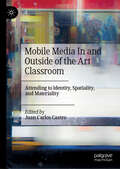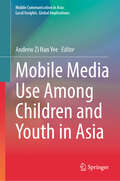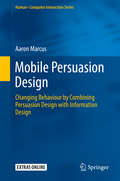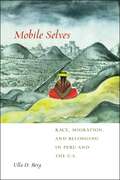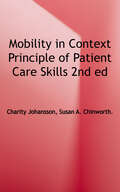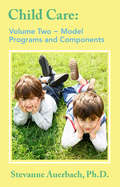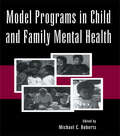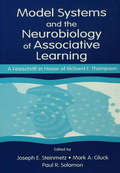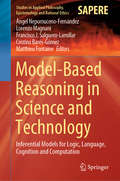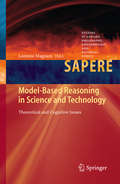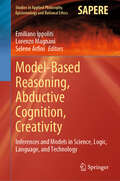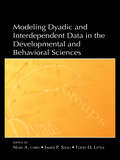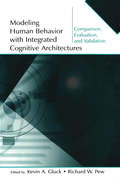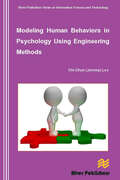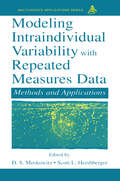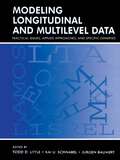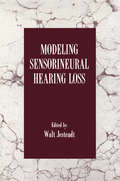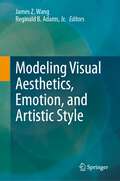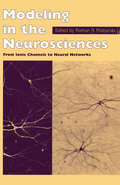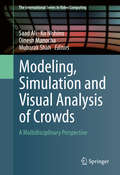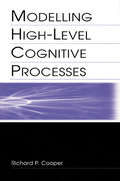- Table View
- List View
Mobile Media In and Outside of the Art Classroom: Attending to Identity, Spatiality, and Materiality
by Juan Carlos CastroThis edited volume explores a range of educational effects on student learning that resulted from a long-term study using a creative visual arts curriculum designed for mobile media (smartphones and tablets) and used in art classrooms. The curriculum, entitled MonCoin, a French phrase meaning My Corner, was initially designed and piloted in a Montreal area school for at-risk youth in 2012. Since then, it has been refined, deployed, and researched across secondary schools from a range of socio-cultural educational contexts. This book is comprised of contributions from researchers and practitioners associated with the MonCoin project who address critical insights gleaned from our study, such as the social context of teen mobile media use; curriculum theory and design; influences of identity on creative practice; and specific strategies for creative applications of mobile media in schools. The purpose of this edited book is to offer art education researchers and teachers innovative curriculum for mobile media and the networked conditions that influence identity, space, and practice with and through this ubiquitous technology.
Mobile Media Use Among Children and Youth in Asia (Mobile Communication in Asia: Local Insights, Global Implications)
by Andrew Zi Han YeeThis book examines mobile media use among children and youths within an Asian context. By studying the impact of mobile media on children and youth in Asia, it focuses on the explosive growth of mobile media among young people and seeks to understand the potential consequences of mobile media use on society, relationships, and what it means to be a young person. With this, it provides a richly contextualized Asian voice to research on mobile media and young people, enriching the global conversation surrounding an increasingly central aspect of youths’ everyday lives. Research on mobile media and its impact on children and youths in Asia is not thoroughly represented, despite the proliferation of smartphone and tablet use in the region. This volume fills this gap by canvassing contemporary research on mobile media, children, and youth in Asia through the perspectives of emerging scholars in the region and beyond. It promotes an understanding of the motivations and patterns of use by children and youth in the region, examines contemporary research on the antecedents and consequences of mobile media use on society, relationships, and the individual, and provides a critique of mobile media use among children and youth. The volume also provides a culturally sensitive examination of mobile media use among children and youth, describing and analyzing policies enacted to manage young people’s smartphone use. It acknowledges Asia as a large and diverse region with differing linguistic, cultural, and sociopolitical traditions and contexts, and so the work does, as far as possible, look to ensure geographic and cultural diversity by prioritizing works from countries that are typically underrepresented. It is a relevant text to graduates and researchers in communication and media studies, social and developmental psychology, human development studies, science and technology, information systems, and design science.
Mobile Persuasion Design
by Aaron MarcusMobile Persuasion Design presents ten conceptual design projects (or 'Machines') for new mobile application's (smartphone or tablet with Web portals) that combine theories of persuasion and information design to change people's behaviour. Areas such as the environment, health, learning and happiness are explored, looking at ways of marrying people's wants and needs to make simple, usable and desirable mobile applications. A user-centred design approach has been used, adopting user experience (UX) methods, in-depth case studies and market analysis to see what a modern user needs from their mobile application. By applying concepts like persuasion theory and information architecture, try to find ways to satisfy these needs and positively change their user habits. In 2011, the Green, Health, and Money Machines won design awards in an international competition hosted by the International Institute for Information Design, Vienna.
Mobile Selves: Race, Migration, and Belonging in Peru and the U.S. (Social Transformations in American Anthropology #3)
by Ulla D. BergAn explanation of how Peruvian migrants maintain meaningful social relations across borders.In this engaging volume, Ulla D. Berg examines the conditions under which Peruvians of rural and working-class origins leave the central highlands to migrate to the United States. Migrants often create new portrayals of themselves to overcome the class and racial biases that they had faced in their home country, as well as to control the images they share of themselves with others back home. Migrant videos, for example, which document migrants’ lives for family back home, are often sanitized to avoid causing worry. By exploring the ways in which migration is mediated between the Peruvian Andes and the United States, this book makes a major contribution to understanding technology’s role in fostering new forms of migrant sociality and subjectivity. It focuses on the forms of sociality and belonging that these mediations enable, adding to important anthropological debates about affect, subjectivity, and sociality in today’s mobile world. It also makes significant contributions to studies of inequality in Latin America, showcasing the intersection of transnational mobility with structures and processes of exclusion in both national and global contexts. A key resource for understanding the experiences of racialized and indigenous migrant populations, Mobile Selves demonstrates the critical role that ethnography can play in transdisciplinary migration studies and exemplifies what comparative migration studies stand to gain from anthropological analysis and ethnographic methodologies.
Mobility in Context: Principles of Patient Care Skills
by Charity Johansson Susan A. ChinworthMaximize patient care skills Rely on this state-of-the-art, multimedia resource to help you navigate confidently in both common and complex clinical situations. Mastering patient care skills will ground you in fundamental rehabilitation principles; help you establish a culture of patient-centered care; and teach you to foster habits of clinical problem solving and critical thinking. You'll also learn how to help your patients progress toward greater mobility and independence. Over 750 full-color photographs and illustrations make every concept crystal clear. See the techniques in action Fifty-five full-color narrated video clips online at DavisPlus show you clinicians and patients performing key techniques described in the text.
Model Programs and Their Components
by James A Rivaldo Ph.D. Stevanne AuerbachModel Programs and Components focuses on the planning and implementation of model programs and presents necessary steps to achieve a comprehensive and practical service to the community including health, food, social, and psychological services and documents local experiences in Appalachia, California, Colorado and Oregon. Foreword by Congressman John Brademas, former President of New York University. Contributors include James A. Levine, Helen L. Gordon, Jean H. Berman, Kathleen B. Latham, Kay Martin, Mary Millman, Mary W.Vlack, Ramon D. Blatt, Paul T. Barnes, Dr. Ann De Huff Peters, Dr. Susan S Aronson, Marilyn Chow, Dorothy N. Shack, David Brown, Keith R. Alward, Linda Regele-Sinclair, Christoph M, Heinicke, Dr. David Friedman, Dr. Elizabeth Prescott, Conchita Puncel, and June Solnit Sale.
Model Programs in Child and Family Mental Health
by Michael C. RobertsThis volume is the product of a combined effort to find programs of service delivery that demonstrably treat the varieties of mental health problems of children and their families. The Section on Clinical Child Psychology (APA, Clinical Psychology Section I) and the Division of Child, Youth, and Family Services (APA, Division 37) established a task force whose mission was to identify, provide recognition for, and disseminate information on such programs. Their findings are presented here. The opening chapter and each section overview chapter provide orientations to the program descriptions and examine characteristics of exemplary interventions. The targeted problems include: child abuse and neglect, school adjustment problems, social problem-solving problems, autism and developmental disabilities, conduct disorders and severe emotional problems, children affected by disasters and trauma, children whose parents are divorced, children of teenage parents, family dysfunction and parent-child relationships, oppositional defiant disorder, and attention deficit disorder. Settings for interventions in the model programs include: schools, mental health centers and family guidance clinics, hospitals and pediatric practices, group homes and sheltered workshops, community centers, family homes, summer camps, and coordinated systems of care. The 18 programs described demonstrate the rationale for their interventions, their targeted populations, the type of staff and personnel, various programmatic interventions, aspects of the problems, implementation of interventions, and how the programs have been evaluated. The needs for improved mental health services remain strong. The supporting organizations and the members of the Task Force intend for the product of this project to be helpful in providing models for meeting those needs.
Model Systems and the Neurobiology of Associative Learning: A Festschrift in Honor of Richard F. Thompson
by Mark A. Gluck Joseph E. Steinmetz Paul R. SolomonThis volume contains a collection of papers written by former students, postdoctoral fellows, and colleagues of Richard Thompson and represent written versions of papers presented at the Festschrift symposium. The Festschrift provided an excellent opportunity for the participants to recount their memories and experiences of working with one of the leading figures in behavioral neuroscience, and to place their current research in the context of earlier research conducted in the Thompson laboratory. As a Festschrift volume, the various chapters contain numerous and sometimes very personal references to Richard Thompson's influence on the careers of the authors, as well as summaries of past and present work being conducted in the authors' laboratories. Part I includes studies of spinal cord plasticity and the involvement of the hippocampus and related structure in classical eyeblink conditioning. Part II explores the critical role of the cerebellum and associated areas in classical eyeblink conditioning. Part III focuses on a continued exploration of the involvement of the cerebellum in classical eyeblink conditioning using standard procedures as well as innovative molecular biology and genetic techniques. It also includes studies aimed at delineating modulatory influences on learning such as stress and hormonal factors. The incredible influence that Richard Thompson has had on the fields of experimental psychology and neuroscience should be evident on reading the contributions made by the various authors to this volume. The research conducted in Thompson's laboratory over the years has been cutting-edge, comprehensive, and influential. Therefore, this volume is dedicated to Richard F. Thompson a productive, innovative scientist and outstanding mentor.
Model-Based Reasoning in Science and Technology: Inferential Models for Logic, Language, Cognition and Computation (Studies in Applied Philosophy, Epistemology and Rational Ethics #49)
by Lorenzo Magnani Ángel Nepomuceno-Fernández Francisco J. Salguero-Lamillar Cristina Barés-Gómez Matthieu FontaineThis book discusses how scientific and other types of cognition make use of models, abduction, and explanatory reasoning in order to produce important and innovative changes in theories and concepts. Gathering revised contributions presented at the international conference on Model-Based Reasoning (MBR18), held on October 24–26 2018 in Seville, Spain, the book is divided into three main parts. The first focuses on models, reasoning, and representation. It highlights key theoretical concepts from an applied perspective, and addresses issues concerning information visualization, experimental methods, and design. The second part goes a step further, examining abduction, problem solving, and reasoning. The respective papers assess different types of reasoning, and discuss various concepts of inference and creativity and their relationship with experimental data. In turn, the third part reports on a number of epistemological and technological issues. By analyzing possible contradictions in modern research and describing representative case studies, this part is intended to foster new discussions and stimulate new ideas. All in all, the book provides researchers and graduate students in the fields of applied philosophy, epistemology, cognitive science, and artificial intelligence alike with an authoritative snapshot of the latest theories and applications of model-based reasoning.
Model-Based Reasoning in Science and Technology: Theoretical and Cognitive Issues
by Lorenzo MagnaniThis book contains contributions presented during the international conference on Model-Based Reasoning (MBR´012), held on June 21-23 in Sestri Levante, Italy. Interdisciplinary researchers discuss in this volume how scientific cognition and other kinds of cognition make use of models, abduction, and explanatory reasoning in order to produce important or creative changes in theories and concepts. Some of the contributions analyzed the problem of model-based reasoning in technology and stressed the issues of scientific and technological innovation. The book is divided in three main parts: models, mental models, representations; abduction, problem solving and practical reasoning; historical, epistemological and technological issues. The volume is based on the papers that were presented at the international
Model-Based Reasoning, Abductive Cognition, Creativity: Inferences and Models in Science, Logic, Language, and Technology (Studies in Applied Philosophy, Epistemology and Rational Ethics #70)
by Emiliano Ippoliti Lorenzo Magnani Selene ArfiniThis book discusses how scientific and other types of cognition make use of models, abduction, and explanatory reasoning in order to produce important, innovative, and possibly creative changes in theories and concepts. Gathering revised contributions presented at the international conference on Model-Based Reasoning (MBR023), held on June 7–9, 2023 in Rome, Italy, the book addresses various intertwined topics ranging from the epistemology and applications of models also concerning the problem of knowledge production and scientific methodology (information visualization, experimental methods, and design) to the analysis of their role in cognition, decision-making, also with respect to social implications. The problem of model-based cognition is also illustrated taking advantage of recent results regarding problem-solving, abduction, and logic, paying attention to a critique of the dominant and received approaches, to the aim of fostering new discussions and stimulate new ideas. All in all, the book provides researchers and graduate students in the fields of applied philosophy, epistemology, cognitive science, and artificial intelligence alike with an authoritative snapshot of the latest theories and applications of model-based reasoning.
Modeling Contextual Effects in Longitudinal Studies
by Todd D. Little Noel A. Card James A. BovairdThis volume reviews the challenges and alternative approaches to modeling how individuals change across time and provides methodologies and data analytic strategies for behavioral and social science researchers. This accessible guide provides concrete, clear examples of how contextual factors can be included in most research studies. Each chapter c
Modeling Creativity and Knowledge-Based Creative Design
by John S. Gero Mary Lou MaherOver the last decade research into design processes utilizing ideas and models drawn from artificial intelligence has resulted in a better understanding of design -- particularly routine design -- as a process. Indeed, most of the current research activity directly or indirectly deals only with routine design. Not surprisingly, many practicing designers state that the level of understanding represented by these models is only of mild interest because they fail to embody any ideas about creativity. This volume provides a set of chapters in the areas of modeling creativity and knowledge-based creative design that examines the potential role and form of computer-aided design which supports creativity. It aims to define the state-of-the-art of computational creativity in design as well as to identify research directions. Published at a time when the field of computational creativity in design is still immature, it should influence the directions of growth and assist the field in reaching maturity.
Modeling Dyadic and Interdependent Data in the Developmental and Behavioral Sciences
by Noel A. CardThis book reviews methods of conceptualizing, measuring, and analyzing interdependent data in developmental and behavioral sciences. Quantitative and developmental experts describe best practices for modeling interdependent data that stem from interactions within families, relationships, and peer groups, for example. Complex models for analyzing longitudinal data, such as growth curves and time series, are also presented. Many contributors are innovators of the techniques and all are able to clearly explain the methodologies and their practical problems including issues of measurement, missing data, power and sample size, and the specific limitations of each method. Featuring a balance between analytic strategies and applications, the book addresses: The Actor-Partner Interdependence Model for analyzing influence between two individuals The Intraclass Correlational Approach for analyzing distinguishable roles (parent-child) or exchangeable (same-sex) dyadic data The Social Relations Model for analyzing group interdependency Social Network Analysis approaches for relationships between individuals This book is intended for graduate students and researchers across the developmental, social, behavioral, and educational sciences. It is an excellent research guide and a valuable resource for advanced methods courses.
Modeling Human Behavior With Integrated Cognitive Architectures: Comparison, Evaluation, and Validation
by Kevin A. Gluck Richard W. PewResulting from the need for greater realism in models of human and organizational behavior in military simulations, there has been increased interest in research on integrative models of human performance, both within the cognitive science community generally, and within the defense and aerospace industries in particular. This book documents accomplishments and lessons learned in a multi-year project to examine the ability of a range of integrated cognitive modeling architectures to explain and predict human behavior in a common task environment that requires multi-tasking and concept learning.This unique project, called the Agent-Based Modeling and Behavior Representation (AMBR) Model Comparison, involved a series of human performance model evaluations in which the processes and performance levels of computational cognitive models were compared to each other and to human operators performing the identical tasks. In addition to quantitative data comparing the performance of the models and real human performance, the book also presents a qualitatively oriented discussion of the practical and scientific considerations that arise in the course of attempting this kind of model development and validation effort.The primary audiences for this book are people in academia, industry, and the military who are interested in explaining and predicting complex human behavior using computational cognitive modeling approaches. The book should be of particular interest to individuals in any sector working in Psychology, Cognitive Science, Artificial Intelligence, Industrial Engineering, System Engineering, Human Factors, Ergonomics and Operations Research. Any technically or scientifically oriented professional or student should find the material fully accessible without extensive mathematical background.
Modeling Human Behaviors in Psychology Using Engineering Methods
by Chi-Chun LeeThe main purpose of the work is to showcase the interdisciplinary engineering approaches in modeling and understanding human behaviors during interpersonal interactions those that could be typical, distressed, or atypical. The ability to measure human behaviors quantitatively has been a core component and a major research direction in both fields of engineering and psychology – though often with distinct approaches designed for different targeted applications. Engineering methods often strive to achieve high predictive accuracies using behavioral informatics techniques; these techniques employ a combination of behavior measures derived using automated signal based descriptors, and of statistical frameworks modeled using machine learning techniques. These approaches are often distinct from the observational approaches the gold standard for the past three decades in the study of psychology, even in clinical settings. The observational approaches are largely based on human subjective judgments.
Modeling Intraindividual Variability With Repeated Measures Data: Methods and Applications (Multivariate Applications Series)
by D. S. Moskowitz Scott L. HershbergerThis book examines how individuals behave across time and to what degree that behavior changes, fluctuates, or remains stable. It features the most current methods on modeling repeated measures data as reported by a distinguished group of experts in the field. The goal is to make the latest techniques used to assess intraindividual variability accessible to a wide range of researchers. Each chapter is written in a "user-friendly" style such that even the "novice" data analyst can easily apply the techniques. Each chapter features: a minimum discussion of mathematical detail; an empirical example applying the technique; and a discussion of the software related to that technique. Content highlights include analysis of mixed, multi-level, structural equation, and categorical data models. It is ideal for researchers, professionals, and students working with repeated measures data from the social and behavioral sciences, business, or biological sciences.
Modeling Longitudinal and Multilevel Data: Practical Issues, Applied Approaches, and Specific Examples
by Todd D. Little Kai U. Schnabel J̈rgen BaumertThis book focuses on the practical issues and approaches to handling longitudinal and multilevel data. All data sets and the corresponding command files are available via the Web. The working examples are available in the four major SEM packages--LISREL, EQS, MX, and AMOS--and two Multi-level packages--HLM and MLn. All equations and figural conventions are standardized across each contribution. The material is accessible to practicing researchers and students. Users can compare and contrast various analytic approaches to longitudinal and multiple-group data including SEM, Multi-level, LTA, and standard GLM techniques. Ideal for graduate students and practicing researchers in social and behavioral sciences.
Modeling Ordered Choices: A Primer
by William H. Greene David A. HensherIt is increasingly common for analysts to seek out the opinions of individuals and organizations using attitudinal scales such as degree of satisfaction or importance attached to an issue. Examples include levels of obesity, seriousness of a health condition, attitudes towards service levels, opinions on products, voting intentions, and the degree of clarity of contracts. Ordered choice models provide a relevant methodology for capturing the sources of influence that explain the choice made amongst a set of ordered alternatives. The methods have evolved to a level of sophistication that can allow for heterogeneity in the threshold parameters, in the explanatory variables (through random parameters), and in the decomposition of the residual variance. This book brings together contributions in ordered choice modeling from a number of disciplines, synthesizing developments over the last fifty years, and suggests useful extensions to account for the wide range of sources of influence on choice.
Modeling Sensorineural Hearing Loss
by Walt JesteadtA recent study indicates that 20 million people in the United States have significant sensorineural hearing loss. Approximately 95% of those people have partial losses, with varying degrees of residual hearing. These percentages are similar in other developed countries. What changes in the function of the cochlea or inner ear cause such losses? What does the world sound like to the 19 million people with residual hearing? How should we transform sounds to correct for the hearing loss and maximize restoration of normal hearing? Answers to such questions require detailed models of the way that sounds are processed by the nervous system, both for listeners with normal hearing and for those with sensorineural hearing loss. This book contains chapters describing the work of 25 different research groups. A great deal of research in recent years has been aimed at obtaining a better physiological description of the altered processes that cause sensorineural hearing loss and a better understanding of transformations that occur in the perception of those sounds that are sufficiently intense that they can still be heard. Efforts to understand these changes in function have lead to a better understanding of normal function as well. This research has been based on rigorous mathematical models, computer simulations of mechanical and physiological processes, and signal processing simulations of the altered perceptual experience of listeners with sensorineural hearing loss. This book provides examples of all these approaches to modeling sensorineural hearing loss and a summary of the latest research in the field.
Modeling Visual Aesthetics, Emotion, and Artistic Style
by James Z. Wang Reginald B. Adams Jr.Modeling Visual Aesthetics, Emotion, and Artistic Style offers a comprehensive exploration of the increasingly significant topic of the complex interplay between human perception and digital technology. It embodies the cumulative knowledge and efforts of a wide array of active researchers and practitioners from diverse fields including computer vision, affective computing, robotics, psychology, data mining, machine learning, art history, and movement analysis. This volume seeks to address the profound and challenging research questions related to the computational modeling and analysis of visual aesthetics, emotions, and artistic style, vital components of the human experience that are increasingly relevant in our digitally connected world. The book's vast scope encompasses a broad range of topics. The initial chapters lay a strong foundation with background knowledge on emotion models and machine learning, which then transitions into exploring social visual perception in humans and its technological applications. Readers will uncover the psychological and neurological foundations of social and emotional perception from faces and bodies. Subsequent sections broaden this understanding to include technology's role in detecting discrete and subtle emotional expressions, examining facial neutrality, and including research contexts that involve children as well as adults. Furthermore, the book illuminates the dynamic intersection of art and technology, the language of photography, the relationship between breath-driven robotic performances and human dance, and the application of machine learning in analyzing artistic styles. This book sets itself apart with its unique multidisciplinary approach, encouraging collaboration across related domains. Packed with comprehensive tutorials, theoretical reviews, novel methodologies, empirical investigations, and comparative analyses, the book offers a rich combination of knowledge and methodologies. The book's focus on cutting-edge research not only presents the latest developments in the field but also illuminates potential paths that can lead to significant advancements in computer and robotic applications.
Modeling in the Neurosciences: From Ionic Channels to Neural Networks
by Roman R. PoznanskiWith contributions from more than 40 renowned experts, Modeling in the Neurosciences: From Ionic Channels to Neural Networks is essential for those interested in neuronal modeling and quantitative neiroscience. Focusing on new mathematical and computer models, techniques and methods, this monograph represents a cohesive and comprehensive treatment
Modeling, Simulation and Visual Analysis of Crowds
by Mubarak Shah Saad Ali Ko Nishino Dinesh ManochaOver the last several years there has been a growing interest in developing computational methodologies for modeling and analyzing movements and behaviors of 'crowds' of people. This interest spans several scientific areas that includes Computer Vision, Computer Graphics, and Pedestrian Evacuation Dynamics. Despite the fact that these different scientific fields are trying to model the same physical entity (i. e. a crowd of people), research ideas have evolved independently. As a result each discipline has developed techniques and perspectives that are characteristically their own. The goal of this book is to provide the readers a comprehensive map towards the common goal of better analyzing and synthesizing the pedestrian movement in dense, heterogeneous crowds. The book is organized into different parts that consolidate various aspects of research towards this common goal, namely the modeling, simulation, and visual analysis of crowds. Through this book, readers will see the common ideas and vision as well as the different challenges and techniques, that will stimulate novel approaches to fully grasping "crowds. "
Modelling Command and Control: Event Analysis of Systemic Teamwork (Human Factors in Defence)
by Neville A. Stanton Chris BaberSince its inception, just after the Second World War, Human Factors research has paid special attention to the issues surrounding human control of systems. Command and control environments continue to represent a challenging domain for human factors research. Modelling Command and Control takes a broad view of command and control research, to include C2 (command and control), C3 (command, control and communication), and C4 (command, control, communication and computers) as well as human supervisory control paradigms. The book presents case studies in diverse military applications (for example, land, sea and air) of command and control. The book explores the differences and similarities in the land, sea and air domains; the theoretical and methodological developments, approaches to system and interface design, and the workload and situation awareness issues involved. It places the role of humans as central and distinct from other aspects of the system. Using extensive case study material, Modelling Command and Control demonstrates how the social and technical domains interact, and why each require equal treatment and importance in the future.
Modelling High-level Cognitive Processes
by John Fox Richard P. Cooper With Contributi Peter G. Yule David W. Glasspool Richard P. CooperThis book is a practical guide to building computational models of high-level cognitive processes and systems. High-level processes are those central cognitive processes involved in thinking, reasoning, planning, and so on. These processes appear to share representational and processing requirements, and it is for this reason that they are considered together in this text. The book is divided into three parts. Part I considers foundational and background issues. Part II provides a series of case studies spanning a range of cognitive domains. Part III reflects upon issues raised by the case studies. Teachers of cognitive modeling may use material from Part I to structure lectures and practical sessions, with chapters in Part II forming the basis of in-depth student projects. All models discussed in this book are developed within the COGENT environments. COGENT provides a graphical interface in which models may be sketched as "box and arrow" diagrams and is both a useful teaching tool and a productive research tool. As such, this book is designed to be of use to both students of cognitive modeling and active researchers. For students, the book provides essential background material plus an extensive set of example models, exercises and project material. Researchers of both symbolic and connectionist persuasions will find the book of interest for its approach to cognitive modeling, which emphasizes methodological issues. They will also find that the COGENT environment itself has much to offer.
